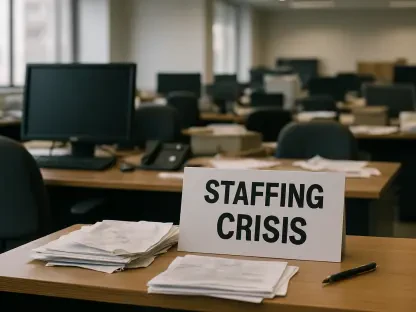As we dive into the evolving landscape of global mobility, I’m thrilled to sit down with Sofia Khaira, a renowned specialist in diversity, equity, and inclusion, who brings a wealth of expertise to HR strategies and talent management. With a deep focus on fostering inclusive workplaces, Sofia has guided numerous organizations through the complexities of international hiring and immigration challenges. Today, we’ll explore how US immigration policies are reshaping the way companies attract and retain global talent, the importance of strategic planning in workforce mobility, and innovative approaches to navigating an increasingly competitive world for skilled professionals.
How are recent shifts in US immigration policies, such as visa fee hikes and border restrictions, impacting global talent seeking opportunities here?
These changes are creating significant hurdles for global talent. Visa fee increases and longer processing times are not just financial barriers but also psychological ones—many skilled professionals are reconsidering the US as a destination when they face uncertainty and delays. Border restrictions add another layer of complexity, making it harder for individuals to even enter for interviews or initial engagements. This is pushing talent to look at other countries with more welcoming policies, which is a real loss for US-based companies that thrive on diverse perspectives and skills.
What effects do you see these policy changes having on companies that depend on international workers?
Companies are feeling the pinch, especially in sectors like tech, healthcare, and engineering, where international talent often fills critical skill gaps. Recruitment costs are soaring due to delays and the need to explore alternative hiring routes. There’s also a hit to morale—teams lose momentum when key hires can’t start on time. Some businesses are even rethinking their growth plans in the US, opting to set up operations in more accessible regions to avoid these disruptions.
Why is it crucial for HR leaders to understand which of their employees are on temporary visas or have high-risk immigration status?
Knowing this is fundamental to risk management. If a significant portion of your workforce is on temporary visas, a sudden policy shift could disrupt entire departments. HR leaders need to anticipate potential issues—like visa expirations or denials—that could affect business continuity. It’s also about supporting employees; understanding their status allows HR to provide tailored guidance and resources, which builds trust and retention.
How can companies begin to build a clear picture of their workforce’s visa dependencies?
Start by conducting a thorough audit of your current workforce. Collect data on visa types, expiration dates, and any pending applications. Collaborate with legal teams or external immigration experts to ensure accuracy. Then, create a centralized database that’s regularly updated—this isn’t a one-time task but an ongoing process. Engaging with employees directly, through surveys or one-on-one discussions, can also uncover nuances that raw data might miss, like upcoming life changes that could impact their status.
Why should companies avoid relying solely on the US for sourcing critical talent?
Putting all your eggs in one basket is risky, especially with immigration policies that can change overnight. The US might be a hub for talent, but if access tightens, companies can find themselves stranded without key personnel. Diversifying talent sources across multiple countries creates resilience. It ensures you’re not derailed by a single market’s restrictions and allows you to tap into a broader pool of skills and perspectives, which can drive innovation.
What alternative markets do you recommend for hiring or relocating skilled workers, and what makes them stand out?
Canada is a top contender with its straightforward visa programs and points-based system that prioritizes skilled workers. The UK also offers attractive options, like the Global Talent Visa, which targets high-demand professions. The EU, particularly countries like Germany and the Netherlands, has streamlined processes for tech and engineering talent. Then there’s the UAE, which is emerging as a hub for business with flexible residency schemes. Each of these markets offers stability and a welcoming stance that contrasts with current US challenges, making them viable alternatives.
How can HR teams transform data from visa applications and relocations into meaningful strategies?
Immigration data is a goldmine if used right. HR teams can analyze approval times, costs, and rejection rates to identify patterns. For instance, if certain visa categories consistently face delays, you can adjust timelines or explore other options. This data can also inform budget planning—relocation costs add up fast. By turning these insights into dashboards or reports, HR can align hiring strategies with the most efficient pathways, ensuring smoother transitions for talent.
Why is staying updated on immigration policy changes across multiple countries so vital for businesses today?
Policies shift quickly, and being caught off guard can lead to legal issues, stalled projects, or lost talent. If you’re operating globally, a change in one country’s rules can ripple through your entire workforce strategy. Staying informed helps you pivot—whether it’s rerouting talent to a different hub or adjusting recruitment plans. It’s about protecting your business and your people from unnecessary disruption in a world where mobility is increasingly tied to competitiveness.
What’s the most effective way for HR teams to keep track of these policy updates without feeling overwhelmed?
Designate a small team or partner with an external expert to monitor key markets—focus on the top five regions where you hire or relocate most. Use tools like automated alerts or newsletters from trusted immigration law sources to stay in the loop. Schedule quarterly reviews to digest major changes and discuss their impact. This structured approach keeps the workload manageable while ensuring you’re always prepared for what’s coming down the pipeline.
Looking ahead, what is your forecast for the future of global mobility and immigration policies in shaping talent strategies?
I think we’re heading toward a more multipolar system where talent flows to the most welcoming destinations. Countries that simplify immigration and prioritize skilled workers will gain a huge edge in attracting investment and innovation. For companies, this means mobility will become a core strategic focus, not just an HR checkbox. I expect we’ll see more businesses building flexible, data-driven systems to adapt to policy shifts and seize opportunities in emerging hubs across Europe, Asia, and the Gulf. Those who can move quickly and smartly will lead the pack.









